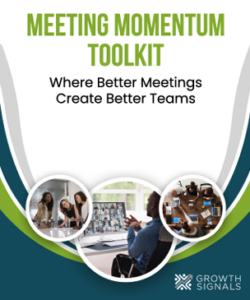In today’s ever-changing workplace, it’s more important than ever for businesses to have a resilient workforce that is able to bounce back from challenges and setbacks.
This is essential in a world where businesses are constantly facing new challenges, such as technological change, economic instability, and social unrest.
This post will help you understand the importance of resilience in the workplace, how you can create a more resilient workforce for your business, and how it will ultimately help you improve employee retention.
With Gallup reporting that 49% of US workers are open to leaving their organization in 2023, tackling this issue is more relevant than ever.
Benefits of a Resilient Workforce for Employee Retention
Resilient employees are more motivated and engaged in their work. As a result, they are less likely to leave their jobs. Here are some of the key benefits:
Resilient Employees are Better Able to Cope with Stress, Burnout, and Other Challenges
This is important because stress and burnout are two of the leading causes of employee turnover. Resilient employees are better able to manage their stress and stay motivated, even when faced with challenges.
Resilient Employees are More Motivated and Engaged in Their Work
This is because they feel more confident and capable in their roles. They are also more likely to see challenges as opportunities for growth and development.
Resilient Employees are Less Likely to Leave Their Jobs
This is because they are more satisfied with their work and feel more connected to their organization. They are also more likely to see their employer as a supportive and caring organization.
How to Create a More Resilient Workforce
If you want to create a more resilient workforce, there are a few things you can do:
Provide Opportunities for Employees to Learn and Grow
This will help employees feel more confident and capable in their roles. Workplace resilience training is a great way to help employees improve their resilience skills.
Create a Supportive Work Environment
This means providing employees with the resources they need to be successful, such as training, development, and flexible work arrangements.
Encourage Employees to Take Care of Their Physical and Mental Health
This means creating a culture that supports employee wellbeing, which can include access to benefits such as employee wellness programs, counseling services, and training.
Celebrate Employee Successes
This will help employees feel appreciated and valued, which can boost their resilience.
Challenges to Creating a More Resilient Workforce
Creating a more resilient workforce is not without its challenges. Here are a few of the key challenges:
The Need for Investment in Training and Development
Creating a more resilient workforce requires investment in training and development. This includes providing employees with the skills and knowledge they need to be successful, as well as the tools and resources they need to manage stress and cope with challenges.
The Need for a Supportive Work Environment
A supportive work environment is essential for creating a resilient workforce. This means creating an environment where employees feel valued, respected, and supported. It also means creating an environment where employees feel comfortable asking for help when they need it.
The Need for Employee Buy-in
Creating a more resilient workforce requires employee buy-in. This means that employees need to be willing to participate in training and development, and they need to be willing to take steps to improve their own resilience.
Lack of Leadership Support
If senior leaders are not supportive of creating a more resilient workforce, it will be difficult to make progress.
Despite these challenges, it is still possible for businesses to create a more resilient workforce. By taking small steps and being persistent, businesses can make a difference.
Conclusion
There are many benefits to having a resilient workforce for employee retention.
Resilient employees are better able to cope with stress, burnout, and other challenges.
They are also more motivated and engaged in their work.
As a result, they are less likely to leave their jobs.
Creating a more resilient workforce is an investment in the future of your business.
By taking steps to create a more resilient workforce, you can improve employee retention, productivity, and satisfaction.



